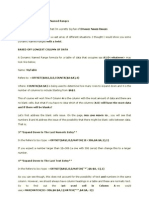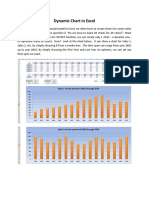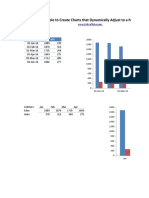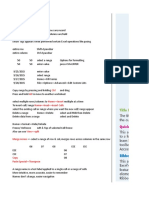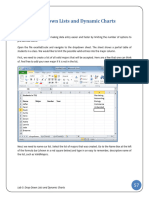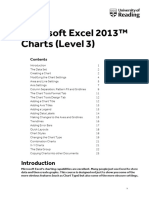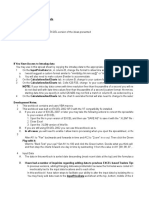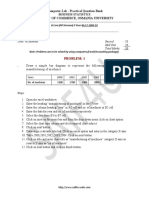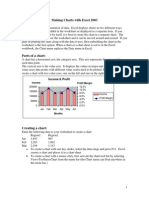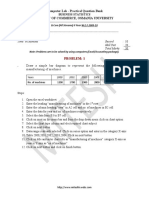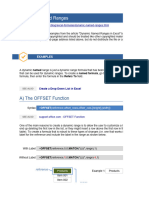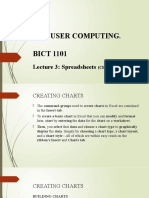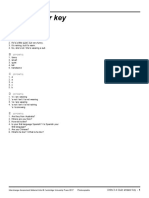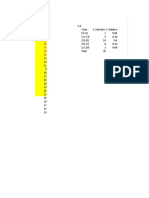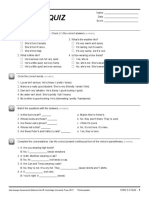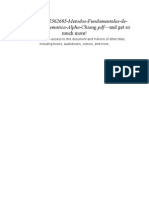0% found this document useful (0 votes)
26 views1 pageOption #2: Using A Dynamic Named Range
The document discusses two options for creating dynamic named ranges in Excel charts. The first option uses OFFSET to define a range that adjusts as rows of data are added or removed. The second option creates a similar dynamic range but fixes the number of rows and columns to reference a set number of cells. Both options allow the chart to automatically update as the source data changes, making the chart dynamic.
Uploaded by
Efren Gustavo Chaves VillalobosCopyright
© © All Rights Reserved
We take content rights seriously. If you suspect this is your content, claim it here.
Available Formats
Download as PDF, TXT or read online on Scribd
0% found this document useful (0 votes)
26 views1 pageOption #2: Using A Dynamic Named Range
The document discusses two options for creating dynamic named ranges in Excel charts. The first option uses OFFSET to define a range that adjusts as rows of data are added or removed. The second option creates a similar dynamic range but fixes the number of rows and columns to reference a set number of cells. Both options allow the chart to automatically update as the source data changes, making the chart dynamic.
Uploaded by
Efren Gustavo Chaves VillalobosCopyright
© © All Rights Reserved
We take content rights seriously. If you suspect this is your content, claim it here.
Available Formats
Download as PDF, TXT or read online on Scribd
/ 1



